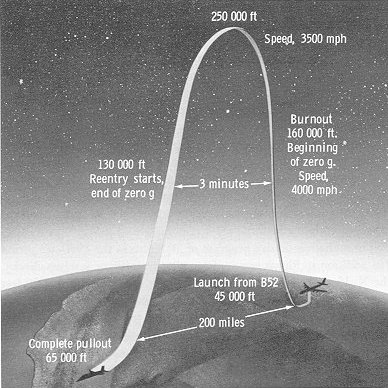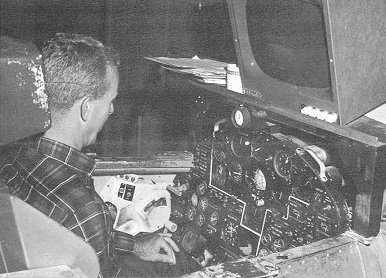
|
| Profile and pertinent details of a flight in which the X-15 achieved its design goals in speed and altitude and came very close to that point in structural temperature. |

|
| Profile and pertinent details of a flight in which the X-15 achieved its design goals in speed and altitude and came very close to that point in structural temperature. |

|
| Before each 10-12-minute research mission, X-15 pilots train as long as 10 hours in the electronic simulator at Edwards AF Base. Chief Research Pilot Walker is sitting in its cockpit here. The simmulator duplicates the X-15's cockpit, instruments, and control system, including hydraulics and dummy control surfaces, and is nearly as long as the aircraft itself. |

|
| This drawing shows the flight paths of two typical research missions of the X-15. Radar stations at Beatty and Ely, Nev., and at home base track each flight from takeoff, attached to a B-52 drop plane, to landing. Launch always occurs near one of the many dry lakes in the region, some of which are indicated here. |


